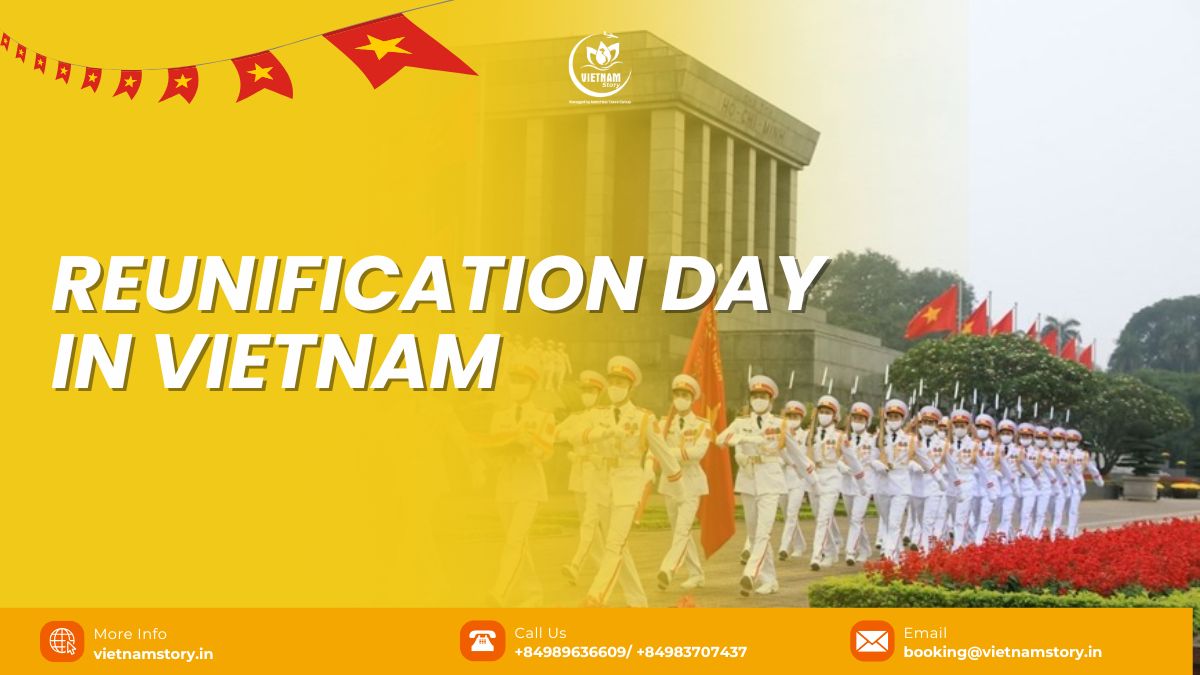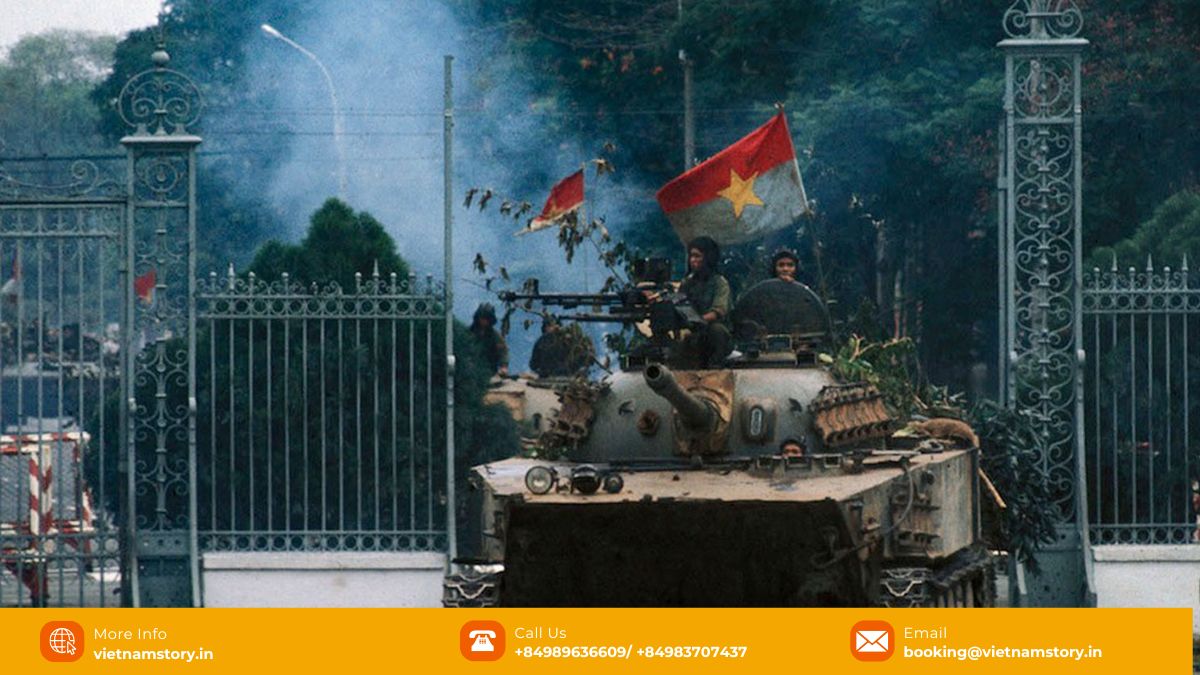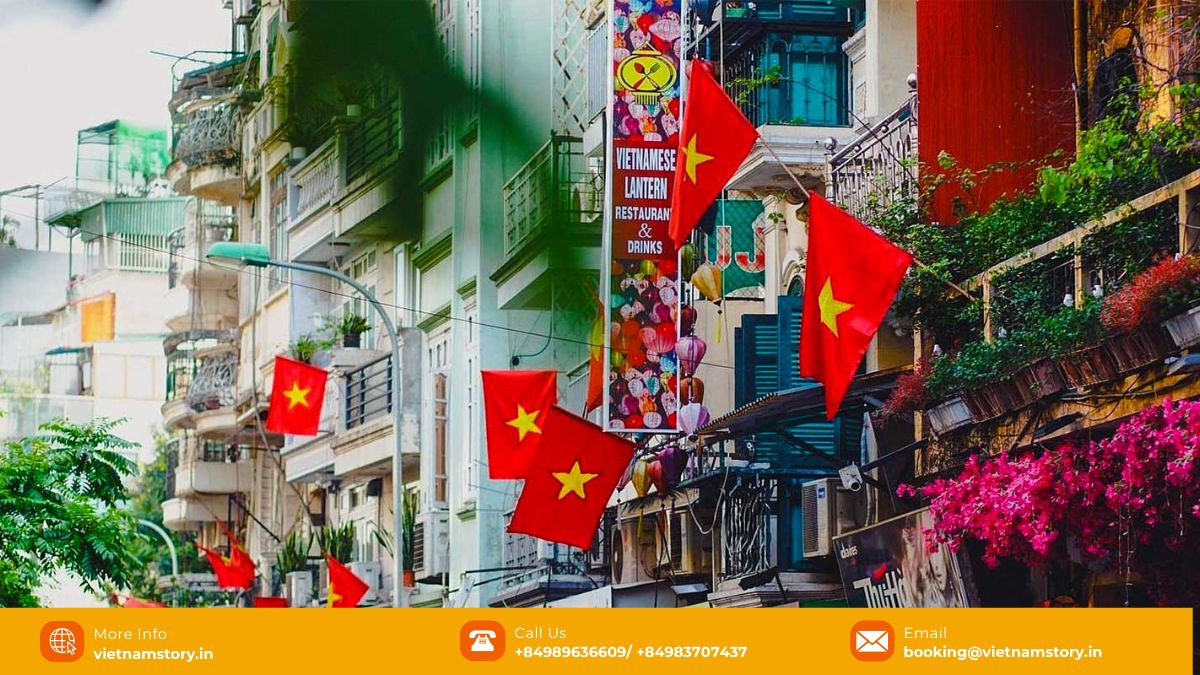Vietnamese Reunification Day, observed annually on April 30th (30/4), stands as a pivotal public holiday in Vietnam, embodying national unity, resilience, and the culmination of a long struggle. This momentous day commemorates the Liberation of South Vietnam and the subsequent reunification of the country in 1975, marking the definitive end of the Vietnam War. For visitors, especially those from India interested in history and culture, experiencing Reunification Day in Vietnam offers a unique opportunity to witness vibrant celebrations, connect deeply with the nation’s past, and appreciate the enduring spirit that shaped modern Vietnam.

What Is Reunification Day Vietnam? Date, Meaning & Holiday Period
Vietnamese Reunification Day is formally celebrated every year on April 30th. Its official name is “Ngày Giải phóng miền Nam, thống nhất đất nước,” translating to “Day of Liberation of the South and National Reunification.” However, it is commonly referred to simply as “Reunification Day,” “Liberation Day,” or “April 30th (30/4).”
This day is a major public holiday across Vietnam. An important point for travellers is that Reunification Day often combines with International Labour Day on May 1st, creating an extended holiday period. If April 30th falls on a weekend, the public holiday is typically observed on the following weekday, potentially leading to a long break of several days – a popular time for domestic travel.
The Historical Significance: From Division to Unification
To grasp the profound meaning of Reunification Day, understanding the preceding decades of conflict is crucial. Following the First Indochina War against French colonial rule and the Geneva Accords of 1954, Vietnam was temporarily divided at the 17th parallel into North Vietnam (Democratic Republic of Vietnam) and South Vietnam (Republic of Vietnam). This division, intended to be temporary, solidified amid Cold War tensions, leading to the long and devastating Vietnam War (referred to in Vietnam as the ‘American War’ or the ‘Resistance War Against America’).
The war pitted the communist North, supported by allies, against the US-backed South. Decades of intense fighting left indelible marks on the nation. The drive for national unification remained a central goal for North Vietnam throughout the conflict.
The Ho Chi Minh Campaign and the Fall of Saigon
The final chapter unfolded rapidly in the spring of 1975 with the decisive Ho Chi Minh Campaign. Following key victories, the North Vietnamese forces launched a major offensive aimed at liberating the South.
On April 30, 1975, this campaign reached its climax with the Fall of Saigon (now Ho Chi Minh City), the capital of South Vietnam. North Vietnamese tanks famously crashed through the gates of the Independence Palace (now the Reunification Palace). President Duong Van Minh of South Vietnam surrendered unconditionally. By midday, the flag of the provisional revolutionary government was raised over the palace, signifying the end of the war and the collapse of the South Vietnamese government.
This event marked not just a military victory but the end of a 30-year struggle for independence and the realisation of national unification. It was a powerful demonstration of Vietnamese resilience and held immense symbolic weight, representing the victory of a smaller nation against a superpower and inspiring anti-colonial movements globally. While celebrated overwhelmingly within Vietnam as liberation and reunification, it’s worth noting that for many who supported the South Vietnamese government and subsequently left the country (the diaspora), the date is remembered somberly as “Black April.” However, the prevailing narrative within Vietnam today strongly emphasizes reconciliation and unity, often using “Reunification Day” as the preferred term.

How is Reunification Day Celebrated in Vietnam?
Reunification Day is celebrated across Vietnam with great patriotism and enthusiasm. It’s a day reflecting on sacrifice, victory, and the joy of a unified nation.
- Flags and Banners: Cities, towns, and homes are adorned with the national flag of Vietnam and red banners featuring patriotic slogans. The streets come alive with vibrant colour.
- Official Ceremonies: Major cities like Hanoi and Ho Chi Minh City host significant events, including solemn flag-raising ceremonies, speeches by government leaders recalling the historical significance, and awards ceremonies.
- Military Parades: On major anniversaries, such as the recent 50th, grand military parades showcasing the nation’s armed forces are held, often in Ho Chi Minh City. These are major spectacles drawing large crowds. Sometimes, contingents from allied nations have also participated.
- Cultural Performances: Concerts featuring patriotic songs, traditional music, and dance performances are common, celebrating Vietnamese culture and history. Fireworks displays often light up the night sky in major centres.
- Family and Community Gatherings: As a public holiday combined often with May 1st, many Vietnamese people travel back to their hometowns or take short trips. Families gather for meals and reflect on their shared history.
- Media Coverage: Television and radio broadcast special programs, documentaries, and live coverage of the official events, reinforcing the day’s significance nationwide.
READ MORE: A full guide to festivals in Vietnam
Reunification Day and Tourism: A Unique Experience for Visitors
Visiting Vietnam during the Reunification Day holiday offers travellers, including those from India, a fascinating glimpse into the country’s historical consciousness and cultural vibrancy. The atmosphere is patriotic and festive.

Things to Consider for Travel During This Period:
- Plan Ahead: Due to the extended public holiday, this is a peak travel time for locals. Expect transportation (flights, trains, buses) and popular accommodations to be booked well in advance and potentially more expensive.
- Crowds: Major cities, especially Ho Chi Minh City and Hanoi, and popular tourist destinations will be crowded. Be prepared for larger crowds at key attractions.
- Closures: Government offices, banks, and many businesses will be closed on April 30th and May 1st. Major tourist sites, restaurants, and shops usually remain open, but it’s wise to check specific opening hours.
Key Sites to Visit for Historical Context:
- Reunification Palace (formerly Independence Palace) (Ho Chi Minh City): The very site where the war ended. Walking through its rooms, including the basement command bunker and seeing the tanks on the grounds, provides a powerful connection to the events of April 30, 1975.
- War Remnants Museum (Ho Chi Minh City): Offers a poignant, though sometimes graphic, perspective on the Vietnam War, primarily from the Vietnamese viewpoint. It provides crucial context for understanding the conflict commemorated by Reunification Day.
- Ho Chi Minh Mausoleum & Museum (Hanoi): While focused on the revolutionary leader, visiting these sites provides insight into the figure central to the North’s struggle for unification.
- Hien Luong Bridge & Ben Hai River (DMZ): Located in Central Vietnam, this site marks the former Demilitarized Zone that divided North and South Vietnam, offering a tangible reminder of the division that Reunification Day overcame.
Beyond the historical sites directly related to the war, the long holiday period is an excellent opportunity to explore other parts of Vietnam. Consider destinations like the stunning Ha Long Bay, the charming ancient town of Hoi An, the beautiful beaches of Da Nang or Nha Trang, or the island paradise of Phu Quoc.
READ MORE: All things you should to know about Vietnamese culture: A journey for the senses
Conclusion: A Day of Reflection and Celebration
Vietnamese Reunification Day is more than just a holiday; it is a deeply significant commemoration etched into the nation’s soul. It represents the end of decades of devastating conflict, the immense sacrifice of millions, and the triumphant achievement of national unification. It stands as a testament to the resilience and determination of the Vietnamese people.
For travellers from India and around the world, experiencing April 30th in Vietnam provides a unique and enriching opportunity. It allows you to witness firsthand the country’s patriotic spirit, engage with its complex and compelling history, and appreciate the vibrant culture of a unified nation moving forward while honouring its past. It’s a chance to understand the journey that has shaped contemporary Vietnam and connect with the enduring spirit of its people.
READ MORE: Vietnamese lion dance – A symphony of movement and rhythm